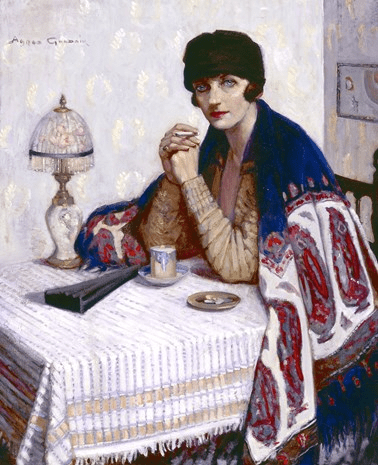The subject of my blog today is the Australian portrait and still life painter Agnes Noyes Goodsir.
Agnes Goodsir was born in Portland, in South-west Victoria, Australia, on June 18th 1864, and was the second daughter and fifth of the eleven children of David James Cook Goodsir, who held the post of Commissioner of Customs at Melbourne, and Elizabeth Archer, née Tomlins. Goodsir enjoyed painting and sketching and concentrated on still life works. She started formal art training at the Bendigo School of Mines around 1898. Her tutor was the painter and educator, Arthur Thomas Woodward. Woodward was born in Birmingham, England, and had received his art education at the Birmingham School of Art where Edward Richard Taylor was headmaster and one of his tutors. Later he attended the South Kensington Art Schools, in London where he was a gold medallist. He emigrated to Victoria, Australia and in 1894 he was appointed Head of the School of Art and Design at the Bendigo School of Mines. He was an excellent educator who was aware of the trends in European fine arts and introduced methods and syllabi based on it, including en plein air art classes and life drawing, thus offering the opportunity for his students to move to France, immerse themselves in French culture and enroll at French academies, where they would be able to study art internationally. Agnes Goodsir was open to the idea of travelling to France and in 1899, aged thirty-five, she decided to increase her knowledge of art by moving half way round the world to Paris but to achieve that goal she needed money. This was achieved when a one-woman show of her paintings was held in Bendigo. Sufficient money was raised by the sale of her work and in 1900 she set sail for France.

Self portrait by Agnes Goodsir (1900)
This self-portrait by Agnes Goodsir is hanging in the National Portrait Gallery in Canberra. It is dated 1900, around the time Agnes arrived in Paris. It is a beautiful oil on canvas work. It combines a formal representation with a dark sobriety that Goodsir presumably believed brought gravitas to the depiction. At the time of the portrait Agnes would have been studying at Académie Delécluse and the Académie Julian and this could be the reason for this academic-styled depiction with its dark background providing an appropriate backdrop and contrast with the artist’s pearly features and beautifully depicted draped hand. This signaled the starting point of her illustrious artistic career in France.

The Letter by Agnes Goodsir (1926)
On arrival in the French capital Agnes enrolled at the Académie Delacluse, an atelier-style art school founded in the late 19th century and named after its founder, the painter Auguste Joseph Delécluse. Later she would take courses at the Académie Julian, under Jean-Paul Laurens, where she was twice placed first in Composition, the Académie de la Grande Chaumière where she won the 1904 silver medal for portraiture, and finally the Académie Colarossi. Agnes made a number of visits to London and at the outbreak of the First World War she left Paris and went back to London. While in London during the war, Agnes became close friends with Bernard Roelvink and his American wife Rachel. Rachel later divorced Roelvink and she reverted to her maiden name, Mrs Rachel Dunn, but to her friends she was known by her nickname ‘Cherry’.
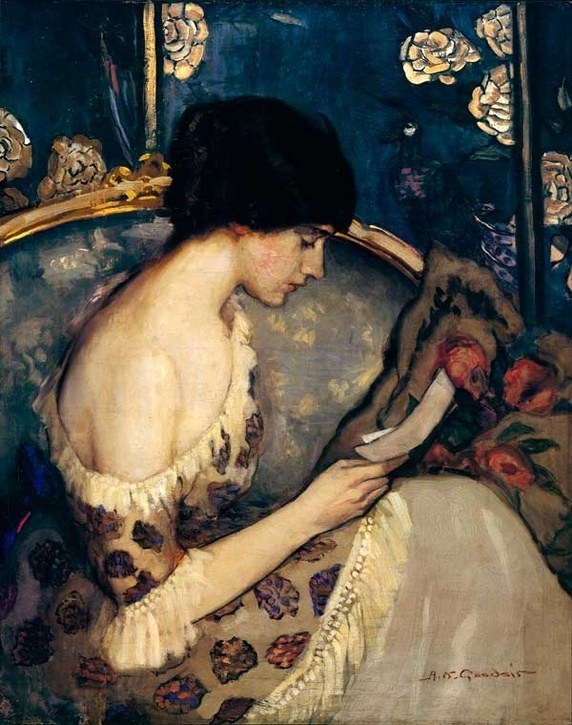
A Letter from the Front by Agnes Goodsir (1914)
Once the Great War had ended Agnes and her beloved companion and muse, Cherry, left the English capital and moved to Paris where they set up home in an apartment at 18 rue de l’Odéon, which is in the sixth arrondissement of Paris on the Left Bank of the Seine, a short walk from the Luxembourg Gardens. Agnes’ work was well received on both sides of the Channel and exhibited at the New Salon, the Salon des Indépendants and the Société Nationale des Beaux-Arts in Paris.
Girl with a Cigarette by Agnes Goodsir (1925)
Paris in the 1920s was the centre of artistic activity, with writers, artists, performers and musicians from all around the world gathering together. Paris’ 6th arrondissement where Agnes and Rachel lived was in the heart of the “action” and was referred to as the Latin Quarter. One of Agnes’ famous portraits of Rachel, which she completed in 1925, was entitled Girl with a Cigarette. Rachel is stylishly dressed, with a colourful wrap and chic accessories. It is the archetypal depiction of a 1920s flapper seen enjoying her coffee and cigarette. She is both self-assured and relaxed within the cafe environment.

The Chinese Skirt by Agnes Goodsir (1933)
Agnes Goodsir and Rachel Dunn lived together in Paris, and Goodsir often depicted Dunn as the unflinching liberated and trendy woman that she undoubtedly was. Once again in her 1933 painting The Chinese Skirt, like many of Goodsir’s works, the subject of the portrait is her lover, Rachel Dunn. In this painting we see Rachel adorned in an elegant and fashionable Chinese-inspired skirt. To the right of her, on a table, are two ceramic figures the colour of which is echoed in the blue embroidery of her skirt, a couple of books in the bookcase seen in the background and the pot sitting atop this piece of furniture.
The Australian newspaper, The Australasian newspaper described Goodsir’s work at the time as being:
“…a galaxy of beautiful, and even more beautiful women, doing feminine things: taking morning tea, posing before a mirror, reading, wearing blue hats or Chinese shawls…”
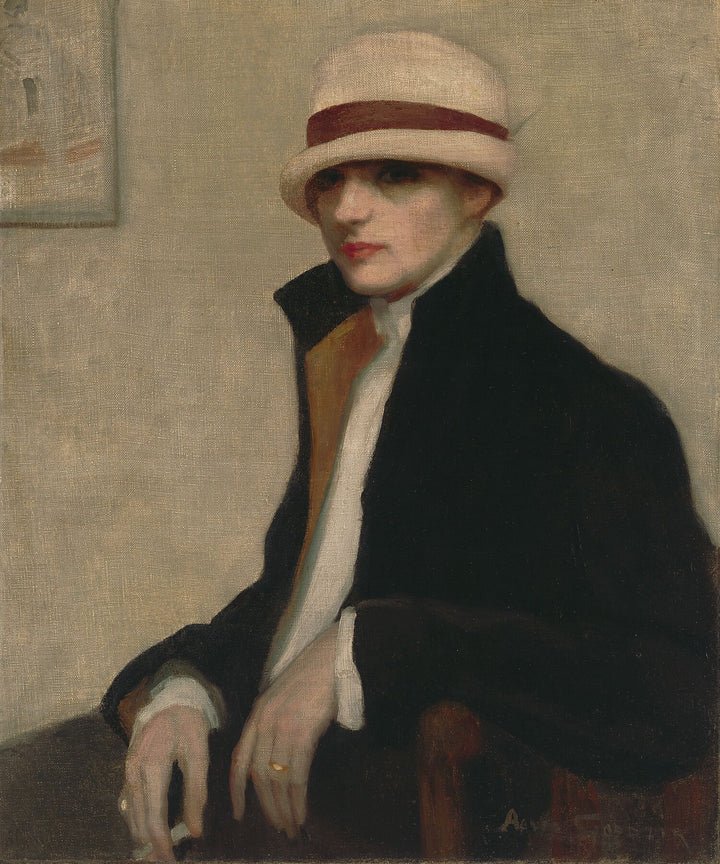
The Parisienne by Agnes Goodsir (c.1924)
Goodsir lived in Paris with Rachel during the period between the two World Wars. France, like other participating countries of the Great War, had lost so many men in the fighting and with this lost generation of men the social life in the French capital was more a feminine affair, and the city between wars was a place for innovative women. Paris was also a place for lesbian couples to live their lives publicly and in peace. The Parisienne depicts Cherry in a modernist style. She is seen in masculine attire, wearing a cloche hat and high collar which encloses her face. Her hands are relaxed in lap, with a cigarette evoking an air of self-confidence and independence.

The Hungarian Shawl by Agnes Goodsir (c.1927)
Following a period of spending time in England, Agnes and Rachel settled down in their rue de l’Odéon apartment in Paris. Agnes painted subjects of the domestic interior of their apartment like a series of still life compositions, continually rearranging views of her everyday life, and often using them as a means to explore the expressive potential of colour combinations. Dunn repeatedly featured as Goodsir’s model, imaged in states of repose and gowned in flamboyant dress creating a sense of a domestic theatre that hovers between pretence and realism. In her 1927 painting entitled The Hungarian Shawl it is all about colour. The background is almost bare and uncluttered allowing us to concentrate on the figure. It is all about the patterns on the shawl’s silky fabric design set against an almost monochromatic background. The depiction is instilled with the diffused interior light and almost resembles a small sketch-like work but at the same time conjures up a luminous sense of colour.

Agnes Goodsir (left) and Rachel Dunn (aka Cherry) (second from left) at Valerie en Caix, c. 1930
In 1926, Goodsir was made a member of France’s Société Nationale des Beaux Arts, one of few Australians to receive the honour.
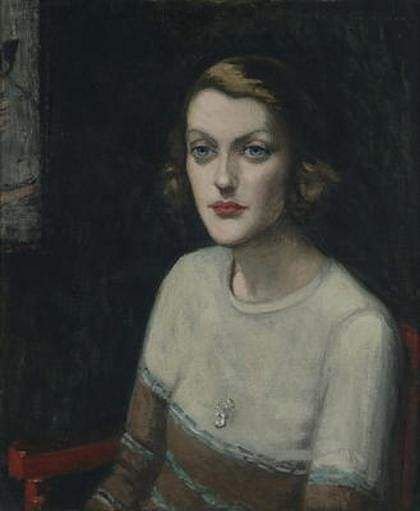
Portrait of Sunday Baillieu Quinn, Paris by Agnes Goodsir (1929)
Although Agnes Goodsir’s lifestyle was looked upon, during her lifetime, as being somewhat controversial, it was nothing compared to the colourful lifestyle of the sitter of a portrait Agnes completed in 1929. The painting was entitled Portrait of Sunday Baillieu Quinn, Paris. Sunday Reed who was born Lelda Sunday Baillieu in Melbourne on October 15th 1905, who later with her second husband, became patrons of the arts and established in Bulleen, a suburb of Melbourne, the Heide Museum of Modern Art, also simply known as Heide . She was the third of four children of Arthur Sydney Baillieu and Ethel Mary Baillieu (née Ham) and was a member of the very affluent Melbourne’s Baillieu family and the niece of William Baillieu, one of Australia’s richest men. She was the third of four children and after being home-schooled from a young age by a governess, completed her education at the prestigious boarding school, St Catherine’s School in Toorak. In 1924 she accompanied her family to England, where she was presented at court during the débutante season. In 1926, when she was twenty-one, she married an American, Leonard Quinn and the couple left Australia and visited England and France. In 1929, around about the time of the portrait Lelda, she was diagnosed with gonorrhoea and had to endure several operations including a hysterectomy which left her unable to bear children and causing deafness in her right ear. Shortly afterwards, her husband deserted her in England and her father and brother had to travel to London to bring her home. By the end of the year the couple were divorced.
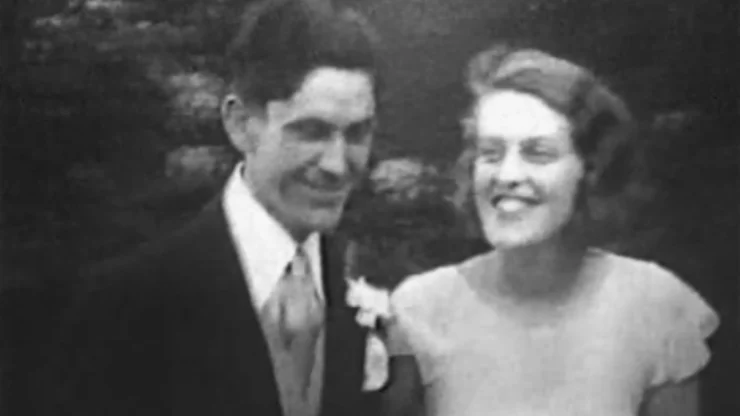
John and Sunday Reed on their wedding day in 1932.
Whilst still convalescing in late 1930, Lelda met her second husband, lawyer John Harford Reed at a tennis party. Despite the difficulty of obtaining a divorce, powerful family influence and connections prevailed and Sunday’s divorce was finalised in June 1931. She and Reid married in January 1932 in a civil ceremony. In 1934 John Reid and his wife bought a former dairy farm on the Yarra River at Bulleen, Victoria, which became known as “Heide”. The couple lived on the property until their deaths in 1981, a short time after, the property had become the Heide Museum of Modern Art.

In the Latin Quarter Studio by Agnes Goodsir (c.1922)
Goodsir’s reputation as a great portrait artist, coupled with her social connections, allowed her to complete portrait commissions of many famous people such as the Australian author and journalist Banjo Patterson, English actress, Ellen Terry, Mussolini, Tolstoy and the Australian soprano, Dame Nellie Melba. Despite those portraits of famous people Agnes Goodsir will be remembered for her portraits featuring Rachel Dunn.
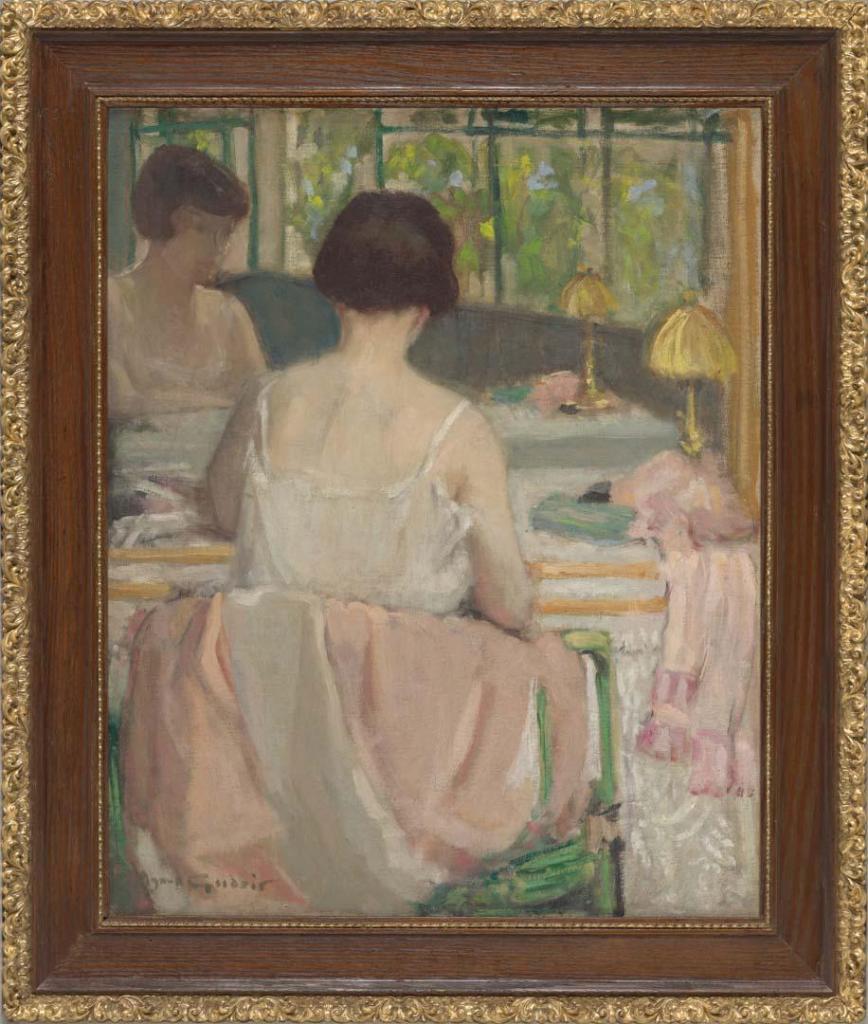
In a Paris Studio by Agnes Goodsir (1926)
Although Goodsir was fond of her Australian birthplace, it was Paris that she loved and where she would spend her final days with Rachel. Agnes Goodsir died in Paris on August 11th 1939, aged 75. All of Agnes’s paintings were left to Rachel. Rachel sent forty of her painting to Agnes’s family in Australia and others to Australian galleries. The Goodsir Scholarship of the Bendigo Art Gallery, one of Australia’s oldest and largest regional art gallery, is named in memory of her. Rachel died in 1950 and was buried in the same grave as her constant companion in a cemetery on the outside Paris.


